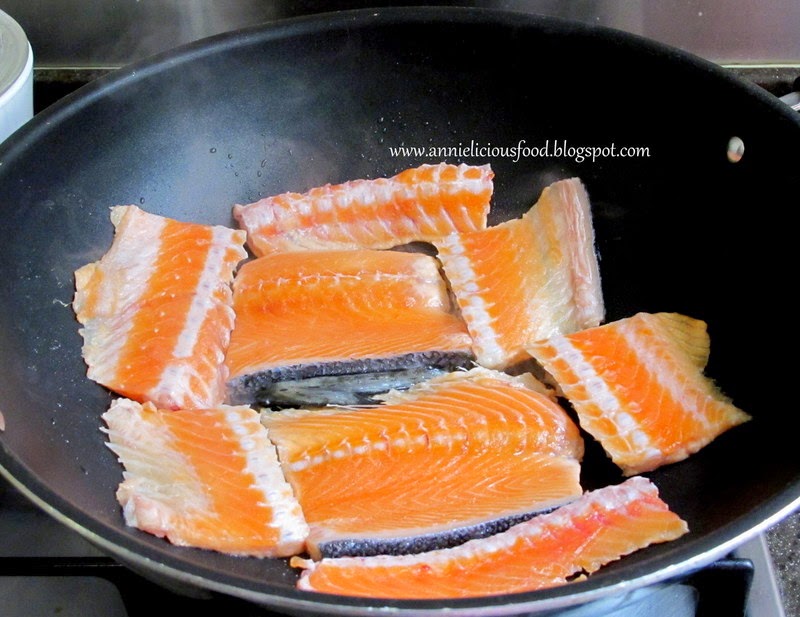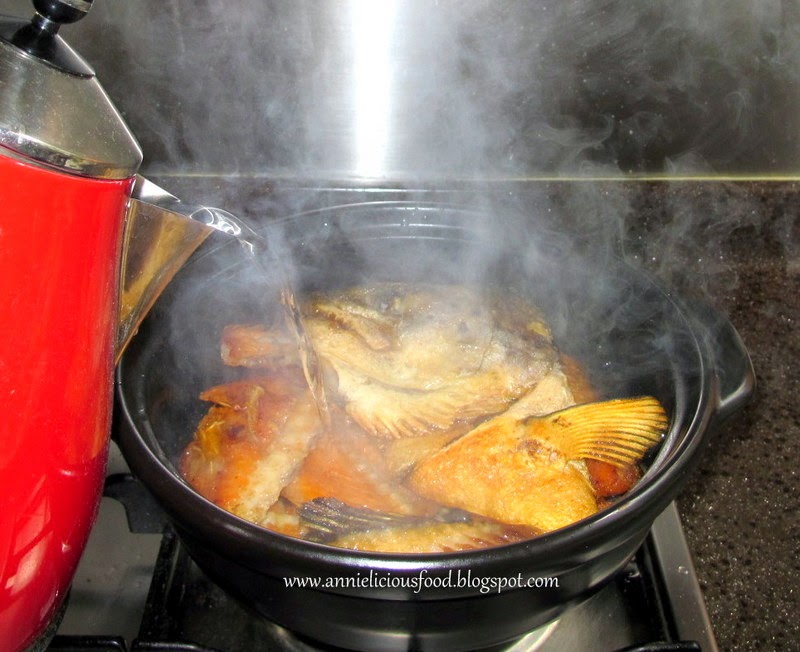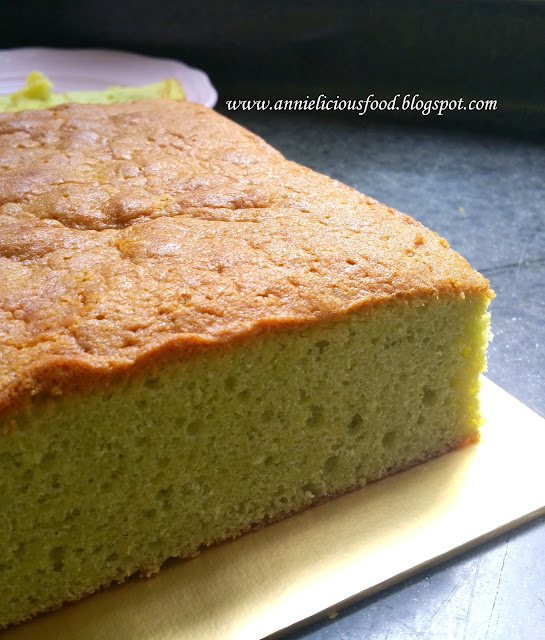Max asked for Kueh Bangkit this year. When I asked him to describe what kind of specific bangkit he wants, he says "
Ohh,,, he has a specific request!
Ever since I started learning baking, Kueh Bangkit was never on my to-bake list. Not until Max asked me to do so. Kueh Bangkit is one of his favorite Chinese New Year cookies. Obviously (refer to above on how he describe that)
In my childhood memory, my faint recall was that Kueh Bangkit is sweet, chalky, packed with coconut flavor, and melt-in-mouth. When I said melt, it really melts IMMEDIATELY in the mouth. The moment the cookies touches the tongue, it melts. Yes. That's the one!
When I grew up, moved to Singapore for work, everything has turned commercialized. Unlike my home-town Kampar that sells home-made cookies during my childhood times. They do, still have some in Singapore, but really good ones? You've got to be lucky to find one. I started to dislike Kueh Bangkit ever since store-bought bangkits invaded the market. Bangkits displayed on the supermarket or neighbourhood bakeries didn't attract me at all. This is where I stopped having interest on Bangkit.
I tell myself, if I want to make, I will make the one that makes me find back at least 70% of my faint childhood feel (probably). If not, I won't consider my bangkit a success. So, this post is to share with you my experience on my attempts on Kueh Bangkit.
As usual, before I start experimenting something, I will make sure I do some reading. I flipped through some cookbooks, check out the online recipes. Comparing the liquid and dry ingredients ratio, I finally settled with
fatboo's recipe that sounds really convincing.
Some people tells me that Kueh Bangkit is easy to make. But mind you, they are easy to fail too. So, becareful on that. To ensure my first attempt a success, I followed the recipe obediently without tweaking it. This also means, I followed the particular ingredients (and the brand) mentioned on the recipe. Only on the 2nd and 3rd attempt, I then tweaked the recipe abit. So, please... be good. For best chances of success, just follow as I said.
![]()
This recipe ask for Ayam Brand Premium Coconut Cream and Sago Flour. Max hunt these two ingredients up and down for me and it is not avail. We managed to found Sago Flour at Sheng Siong Clementi. For the coconut cream, he is so smart enough to call Ayam Brand Singapore to ask for it. Later, we learnt that Ayam Brand Premium Coconut Cream is named as Pure Coconut Cream in Singapore. So, same content, different name I guess. According to Ayam Brand staff, this particular Coconut Cream gives the most similar quality as the freshly squeezed coconut milk in the market. It contains nothing else except coconut cream (no stabilizer).
DISCLAIMER : This is NOT a sponsored post. Because this Coconut Cream really brings out its good flavor. I feel that I should credit and recommend this coconut cream to you guys to ensure higher chances of success in attempt. And please remember, this recipe ask for coconut CREAM, not coconut milk. Becareful.
Ingredients
(Source : Fatboo, with modification after my 3rd attempt) - 800g Sago Flour (2 packs of 400gm)
- 10 to 12 Pandan Leaves (Screwpine Leaves)
- 240gm Ayam Brand Pure Coconut Cream
- 300gm Icing Sugar (Originally ask for 200gm) *See Note
- 3 Egg yolks (medium sized eggs 50 - 55g)
- Drops of Red coloring (optional)
Note :
- I increased Icing sugar from 200g to 300g Icing Sugar on my 2nd and 3rd attempt, and I swear that it does taste better! The existence of Sugar enhances the coconut flavor.
- This recipe makes approx. 330 Bangkits, depends on the cookies thickness. I've got 220 out of this recipe. So, I assume that my cookies is thicker than Fatboo's one.
- The existence of red coloring is to add some festive feel to the overall look of the bangkit. It's absolutely optional.
Flour Preparation
10 - 12 Pandan Leaves : Wash and wipe with paper towels till dry. Cut into desired lengths.
800g Sago Flour: In a big wok, fry sago flour over low heat for 10 mins. Stirring all the time to ensure the flour is not burnt. The initial frying stage would be lumpy and hard to stir.
Cut Pandan Leaves: Add it into the flour and continue to fry another 10mins till flour is light and the pandan leaves are dried and crinkled. The flour will become dry and flies up when stirred. This indicates that the flour is ready.
Note :
- You may not be able to finish the Sago Flour at the end of the baking process. But it's better to prepare more as some will be used for managing the dough, flouring the pastry board and so on. Read on, experience it, and you will know.
- You can prepare the flour one day in advance (or upto 5 days in advance), as the flour needs to cool down completely before you can use them.
- It is highly advisable to leave the fried sago flour overnight to ensure that it is completely cooled. Once it is cooled, sift and store the prepared flour in air-tight container.
Pastry Preparation1) In one bowl, stir
240gm Coconut Cream and
200gm Icing Sugar with hand whisk till sugar dissolved and mixture turned semi-greyish thick sugary solution.
2) In another bowl, whisk
3 Egg Yolks and the remaining
100gm Icing Sugar under high speed till creamy white and sugar is dissolved.
3) Lower speed, add in
(3) coconut sugar solution and whisk till well mixed.
4) With a wooden spatula, add in
560gm Fried Sago Flour, still till well mixed.
*See Photo
5) Cover the dough with a piece of wet cloth to prevent pastry from drying out, let the dough rest awhile.
You only need to mix 560gm Fried Sago Flour into the wet mixture. The rest of the fried sago flour is for you to dust the working top, adding more flour to the sticky dough, dust the rolling pin, and everything else. The pastry is VERY STICKY. In my first attempt, I thought somewhere went wrong, I was worried through the entire experiment as it's not easy to handle.
Rolling and Cutting the Pastry1) Line pastry board with a piece of clingwrap to prevent it from sticking.
2) Working with a cake scrapper, cut out 1/3 portion of the sticky pastry, sprinkle some fried sago flour over, knead in. You need to add in flour bit by bit till pastry is smooth, soft and pliable.
3) Flour worktop, place pastry on it, roll dough out to to your desired thickness. For all my 3 attempts, I conclude that 6mm thickness is ideal for my personal preference.
4) With cookie cutter, cut out the bangkit, place it on a lined baking tray.
5) Using a skewer or a toothpick, put a tiny dot of red color on the bangkit to give this cookies an overall festive feel.
BakingBake in pre-heated oven at 160 degree for 10mins. This initial 10mins is to allow the bangkit to set the design.
Then, reduce the temperature to 130 degree, and continue to bake for a further 10 to 15 mins or till Bangkit is very light beige in color. Keep an eye on it. Gauge it yourself. Your oven and my oven temperament might not be the same.
In the original recipe, it mentioned 160 degree for 10mins and 130 degree for 20mins. I tried, but I think 10mins + 10mins is sufficient. So, always feel it yourself. Because your bangkit thickness might be different from mine.
And this is how it looked when it is out of the oven, The hairline cracks on top of the cookies looked quite nice tho. And the little red dot makes the whole bangkit looked nice. I like!
It takes me 3 attempts to understand certain tricks. I learn new things in every baking experiment. For this bangkit, here's my sharing ...
My
1st attempt : Followed the original recipe obediently. Taste and smells good, but not sweet enough to my liking. Fragile cookies, definitely need alot of tender-loving-care. And it does melt-in-the-mouth very quickly as promised. I'm satisfied, and I consider this a success. Max says this gives him childhood feel. I don't know how true.
My
2nd attempt : I tried tweaking the recipe by using 80% sago flour and 20% tapioca flour, and increased sugar from 200g to 300g. The result, taste and smells better with the enhancement in sweetness. But cookies texture is not what I expected. The cookies is 'crunchy'! And yes, it does melt-in-the-mouth, but it melts VERY slowly... Duh! I don't know why, but I consider this is a failure because the cookies texture is not what I wanted. My MIL literally 'promote' it to her friends who came to our house. And I also don't know why this failed bangkit is a crowd pleaser.
*face-palm*My
3rd attempt : This is the recipe written as above. 100% sago flour, 300g sugar. Result was satisfactory.
Cukup lemak, cukup wangi, cukup manis (literally means enough of coconuty, enough of sweetness, and nice fragrance in Malay). Although the cookies is still on the fragile side, they are better than the 1st attempt. But to be honest, you can't expect tough cookies to give you melt-in-the-mouth feel. Usually fragile cookies does. That's the logic I guess. I found the 'feel' on my 3rd attempt. And also, I'd say this is a success!
Kudos to this recipe. These cookies are good and well received. Definitely better than store-bought. I guarantee you this for sure. And yes, I repeat myself again, it does melt-in-the-mouth quicky! I have to say, I love this recipe, I really do.
But is this the perfect recipe? Maybe yes to me, but maybe no to others. I will continue to search for a perfect ones. If you do have one, please do share with me. Ok?
And a quick tips for you. When you arrange the cookies into the container, use chopsticks to do the work, With my clumsy fingers, I just couldn't control it well, I damaged a few cookies during the process. And I quickly use chopsticks to do the rest of the cookies arrangements.
I hope you like this recipe. And if you do, please go ahead and share this recipe with your friends and relatives.
In this New Year, may good luck and prosperity follow everyone of you. Happy New Year everyone!!!


































































































